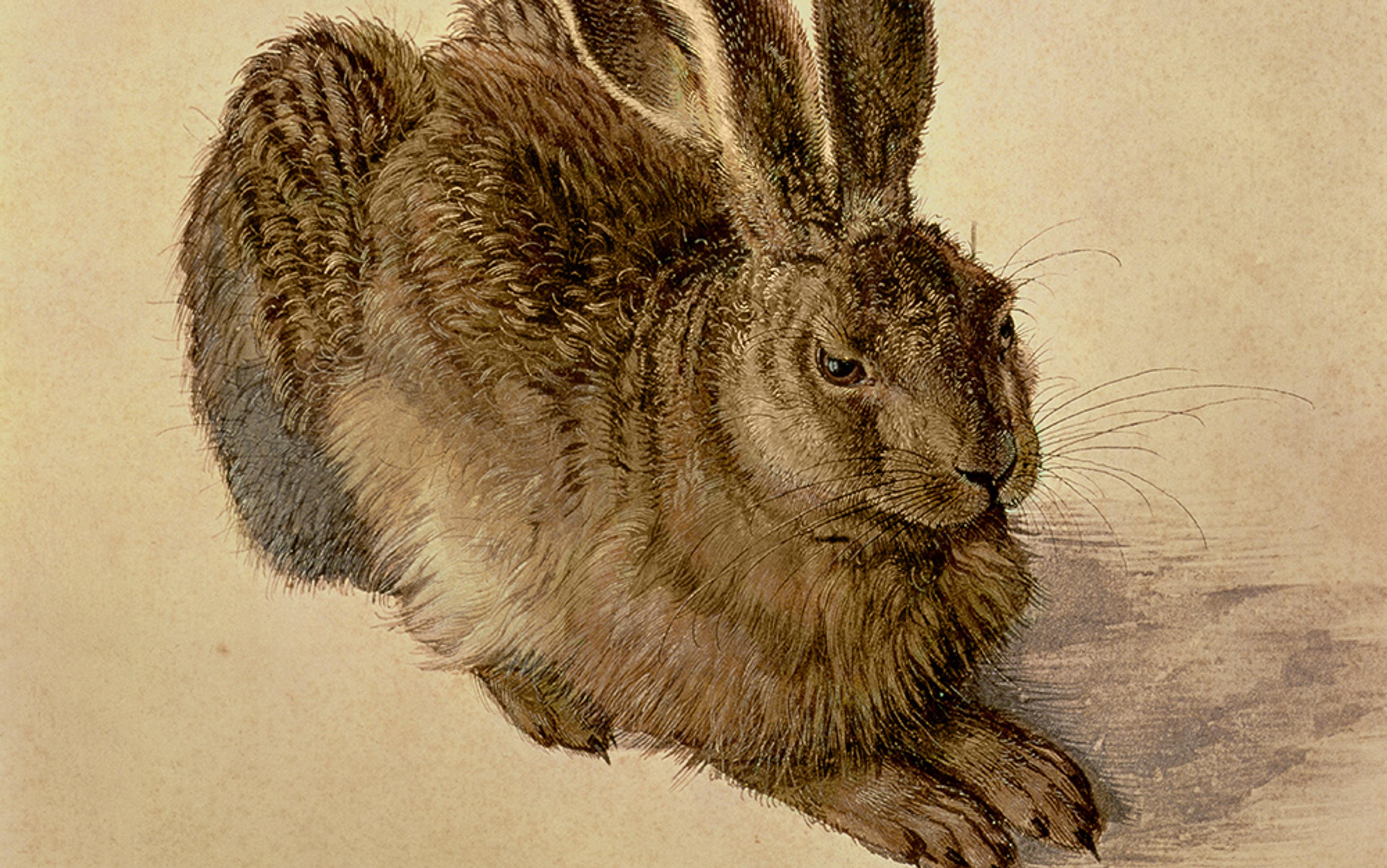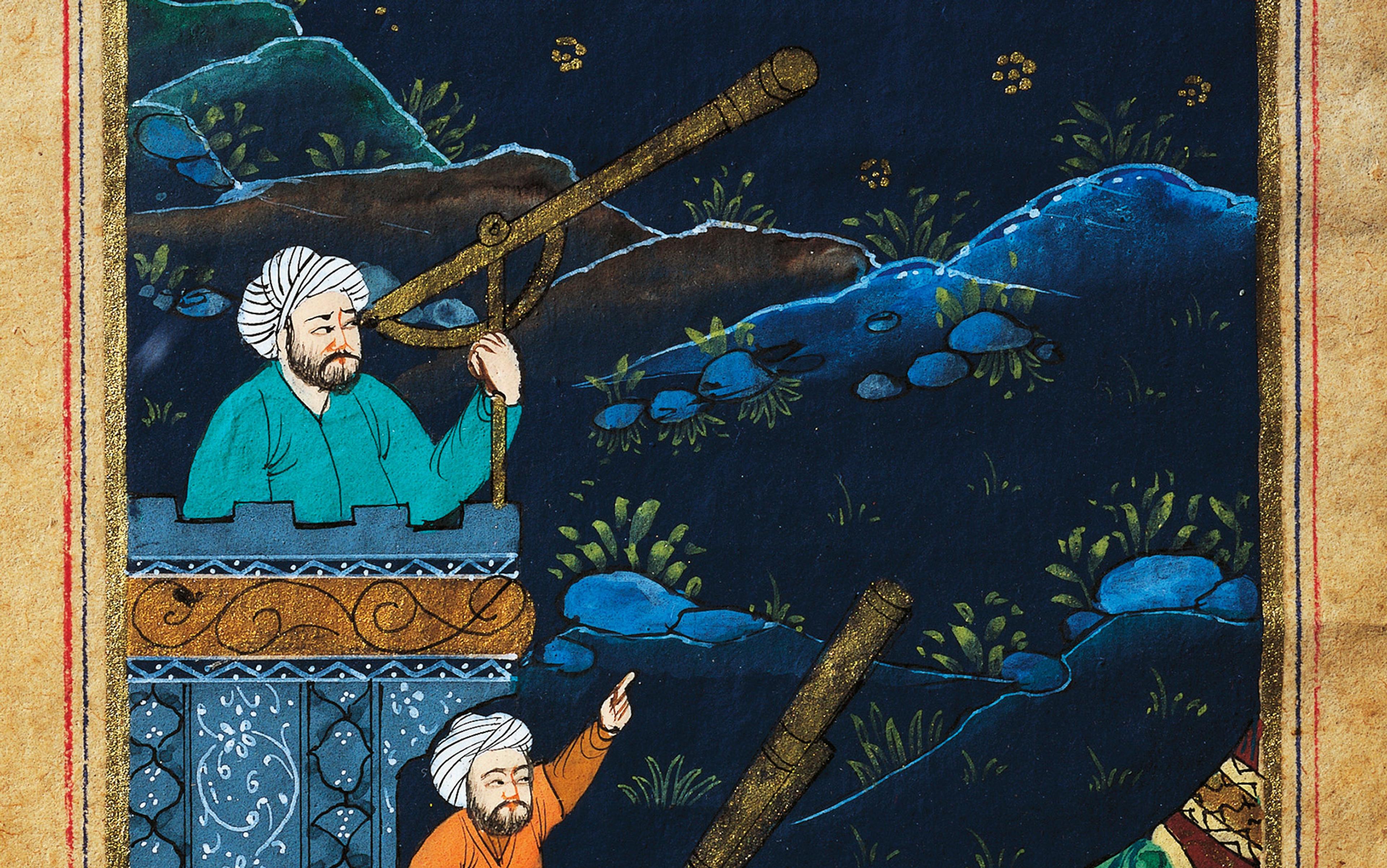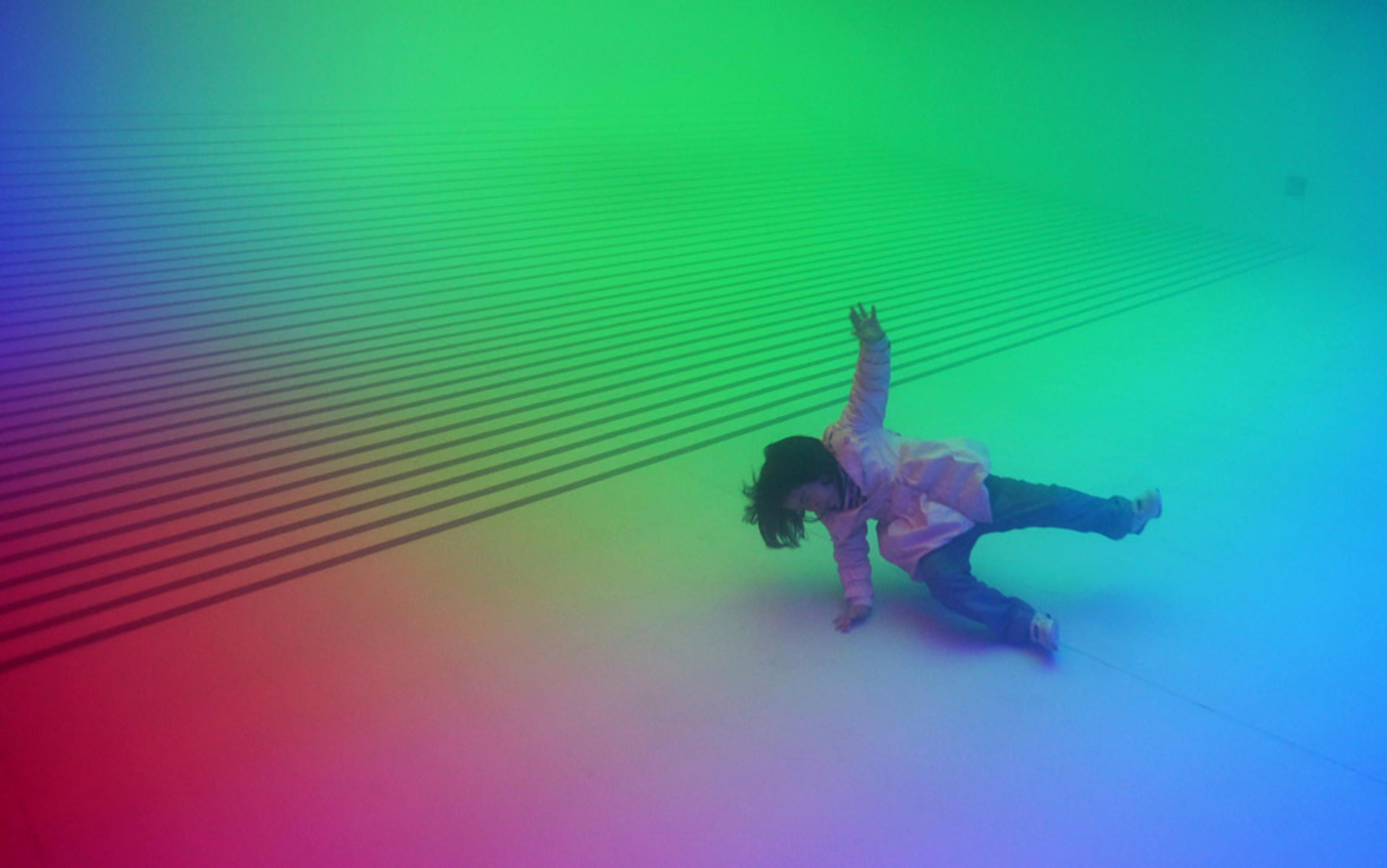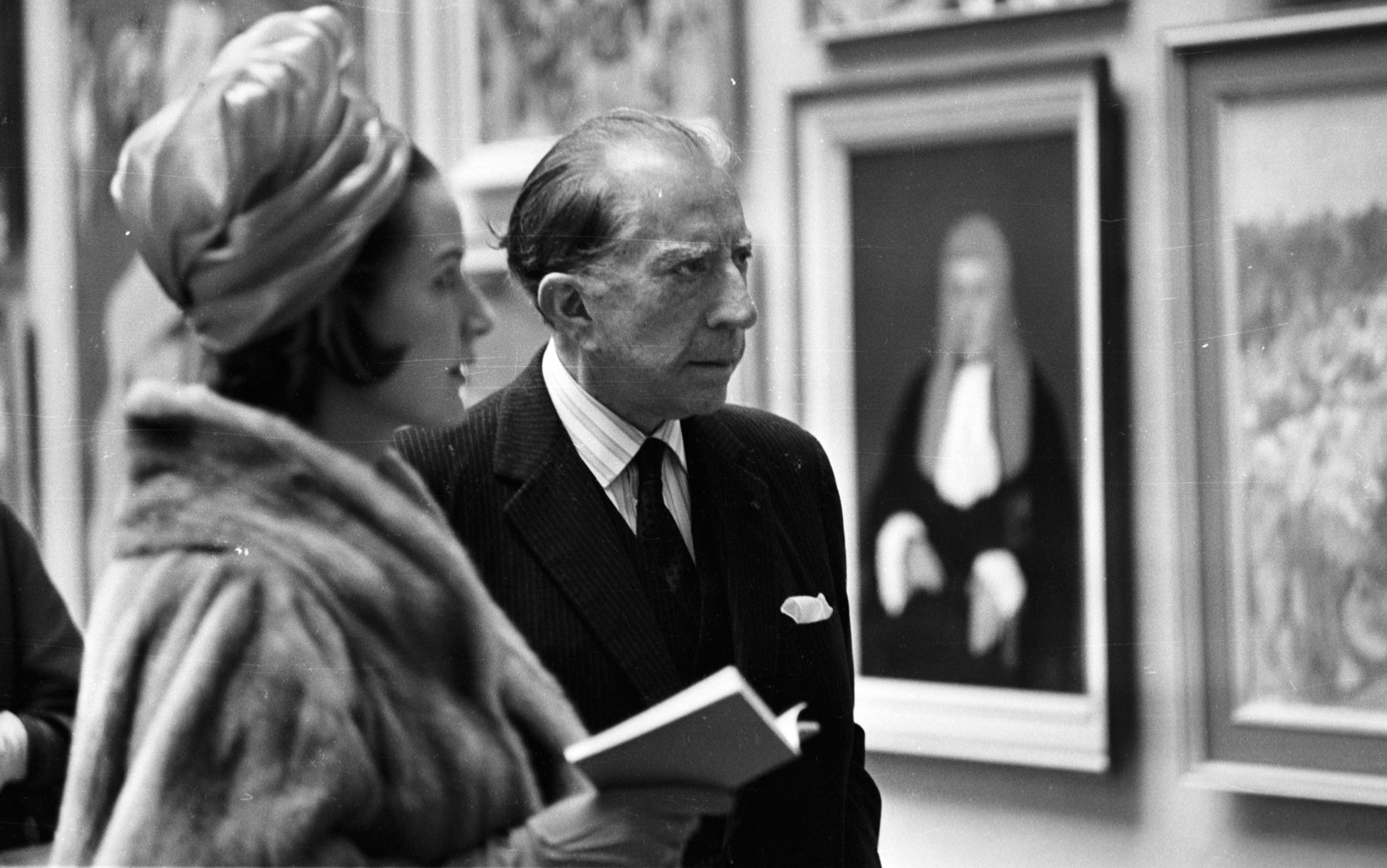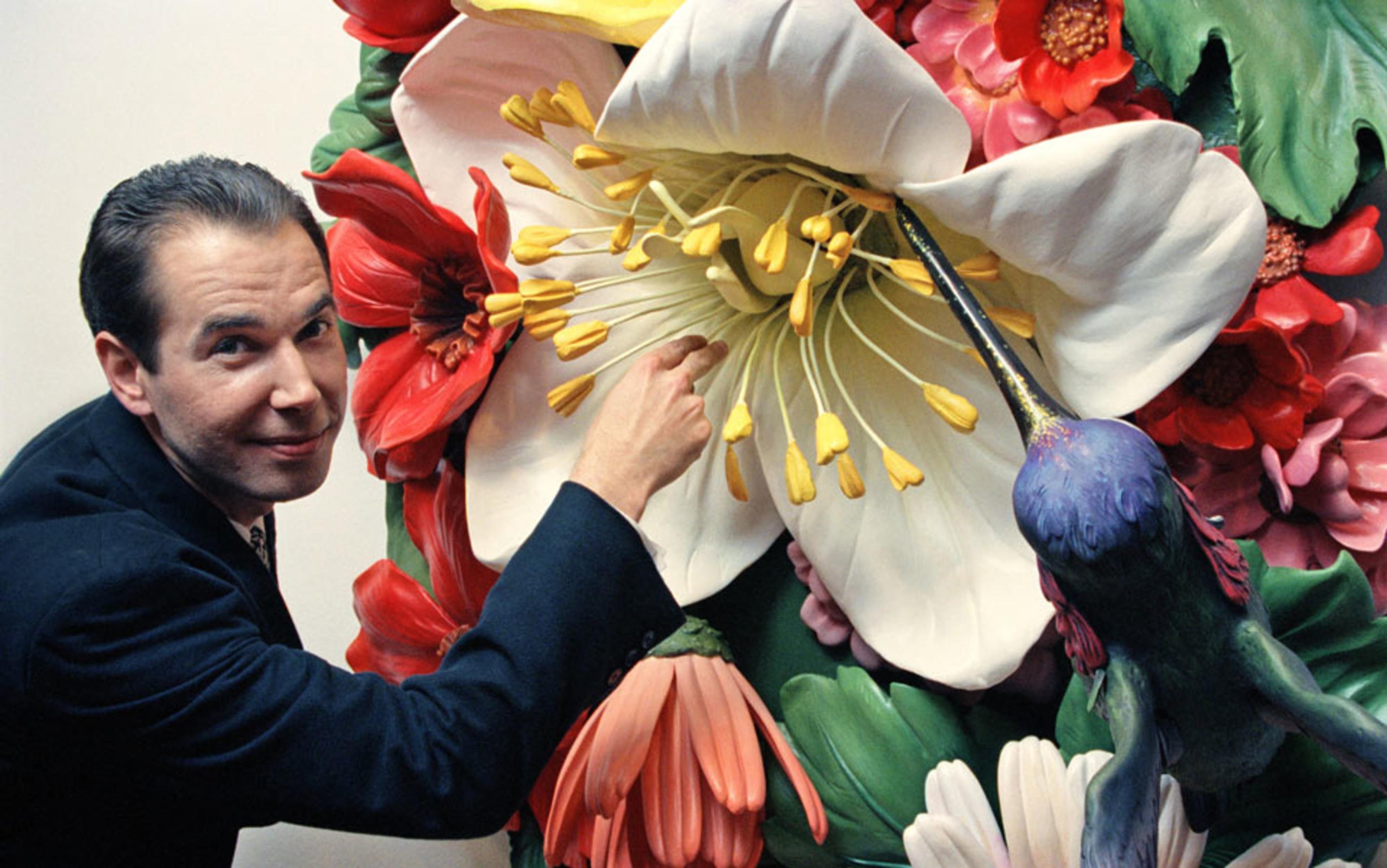I have just under an hour to spare, between interviews with Austrian television and my evening talk at the Albertina Museum in Vienna on the subject of art forgery. Just enough time, I think, to see the collection for the first time.
The Albertina contains much of the Habsburg family’s riches, including around 900,000 prints and works on paper. Its most famous works are by Albrecht Dürer, including the grey-and-white ink drawing Praying Hands (1508), and a pair of proto-Realist watercolours of astonishing detail, Tuft of Grass (1503) and Young Hare (1502). Young Hare in particular is something of a cultural icon of Vienna. The museum’s gift shop sells figurative reproductions of the hare in a rainbow assortment of colours, and the wurstel stand outside has a colossal mint-green version perched atop it. These are the works I’m keenest to see, as I rush through stately rooms and galleries, with one eye on the clock.
The framed Dürers stare out from a slate-blue-and-gold patterned wall, in an alcove that one might easily miss, as it is kept intentionally dark. Light is a demon to art, slowly scorching away the colours, bleaching and bleeding them dry. Camera flashes, direct sunlight, even artificial indirect light can make them fade, and so the shadowy display of the Dürers makes perfect sense.
I spot Young Hare from a distance and dart forward to examine it closely. With a level of detail truly astonishing (if you’ve ever tried to paint with watercolours, you’ll know what a blunt instrument they are in inexpert hands), the hare sits adorably, its individual furs bristling and painted with unbelievable intricacy using a single-hair brush. The diminutive creature, which most people in Dürer’s time would have largely associated with lunch, is made grand and magnificent. This level of naturalism, portraying something real in every aspect of its detail, had not been an important concern for artists before Dürer’s time, and realism would not become a movement for another four-plus centuries. Photorealism would wait a century more. Yet this work is truly photorealistic. After a few moments, I look at the other Dürers here, before turning back to Young Hare. I can’t quite be sure, but something feels wrong.
There is an implicit contract in play between museums and their visitors. Since their origins as purpose-built institutions in the 18th century, when the collection of Sir Hans Sloane was gifted to the British nation to become the kernel of the British Museum, museums have been tasked with preserving and protecting our treasures against climate, deterioration, fire and theft, while at the same time presenting the collection to visitors for educational, aesthetic and research purposes. The public has an implicit trust in museums, relying on curators to display carefully selected and screened works. Fakes, forgeries or copies have no place in museums – at least, not knowingly, or without identifying them as such.
Our fascination with visiting museums draws on the cult of adulation for the unique work of art, as explored by Walter Benjamin in ‘The Work of Art in the Age of Mechanical Reproduction’ (1936). We want an authentic encounter as opposed to the experience of gazing at reproductions in books. It’s the reason art-lovers build trips abroad around certain galleries, never mind that an artwork might be the product of many hands, created in the studio system in which a master such as Rembrandt or Rubens might have a dozen or more assistants and apprentices at work on any given painting. The outcry is enormous each time conspiracy theorists claim that Leonardo da Vinci’s Mona Lisa (1503-06), on display at the Louvre, is in fact a copy, with the original squirrelled away for safekeeping – and it would be a scandal of epic proportions if that were true.
Visitors expect a reverberant experience when confronting an original masterpiece. The iconic nature of the work offers them a communion with history, a sense of time-travel, and elicits a reverence akin to that felt by spiritual pilgrims who finally get to kneel before a religious relic. Museum-goers are on artistic pilgrimage, happy to encounter new treasures, but they set out to experience the ‘must-sees’. There is also an element of celebrity-spotting in play. When I see a work of art that I recognise from the textbooks but have never viewed in person, I get an endorphin rush of recognition. Imagine the disappointment if a celebrity-spotter thinks she’s spied David Beckham, only to realise it’s just a lookalike. Yet a parallel to this rather quotidian example occurs regularly in museums the world over, and no one seems to mind. Or rather, almost no one seems to notice.
After my talk at the Albertina, I was taken to dinner by a bevy of curators, the founders of the neighbouring Leopold Museum (which boasts the world’s best collection of works by Egon Schiele), and a member of the German art squad responsible for arresting the Beltracchi family, just released from prison for a multimillion-euro art-fraud scheme. In a recent interview, Wolfgang Beltracchi mentioned that one of his forgeries was at the Albertina, but played coy about which one. This prompted a feeding frenzy in the German media, with its love affair with forgers, whose true-crime stories often embody the working-class loveable rogue who, through skill and wit, pulls the wool over the eyes of the wealthy elite. (Although, in this case, Beltracchi’s claim was widely dismissed as a publicity stunt.)
That evening, art forgery was the subject of conversation in the museum’s stylish black marble restaurant. The patrons of the Leopold lamented that they could show their best Schiele drawings (the ones that drew pilgrims) only for a few months at a time. The rest of the time they were in darkened storage, to minimise their exposure to light, and reproductions were displayed in their place. Someone from the Albertina sympathised. She explained that Dürer’s marvellous watercolours, Young Hare and Tuft of Grass, are shown to the public only for three-month periods every few years. Otherwise they reside in temperature-, light- and humidity-controlled Solander boxes in storage. Had I had the chance to see them?
Indeed I had, and while I had been suspicious that something wasn’t quite right about them, I would be flattering myself to say that I immediately knew they were reproductions. Today’s printing technologies make it difficult to distinguish high-quality facsimiles from originals, at least not without taking them out of the frame and examining the back (which holds a wealth of clues about an object’s age and provenance), or looking at the surface in detail, without the interference of protective glass. In an intentionally shadowy alcove I could sense that something was off, but not exactly what.
Curators agonise over the vocabulary of uncertainty. A work can be called ‘by Rembrandt’ only if there is a strong degree of certainty, backed by archival documentation, that it emerged from his studio. Other terms that one frequently sees on wall-copy the world over are ‘after Rembrandt’, ‘school of Rembrandt’, ‘attributed to Rembrandt’, ‘circle of Rembrandt’, and so on. The cardinal rule is: do not mislead the public.
what if you booked a ticket to a show weeks in advance, only to arrive on a day when the originals were hibernating?
Modern conservators follow suit. In the past, restorers would touch up damaged works in such a way that their restoration was indistinguishable from the original. For example, Belgium’s leading restorer, Jef Van der Veken, had such a heavy hand that there’d often be more Van der Veken than original; in 2004, the Groninger Museum in the Netherlands held an exhibition featuring his restorations, entitled ‘Fake or Not Fake’. Today’s conservators mitigate damage and prevent or slow deterioration, but they try never to be disingenuous, even to the untrained eye. Modern restorations are intentionally visually distinct from the original, and are carefully documented and photographed every step of the way, so as not to mislead in the slightest.
With such moral weight given to the responsibility not to mislead, it seems odd that major museums should display reproductions without making it clear that they were not originals. As Martin Kemp, emeritus professor of art history at the University of Oxford, explained: ‘There are obvious conservation problems in showing graphics. I don’t in principle mind facsimiles being shown if there is total and visible honesty about what visitors are seeing.’ Eve Straussman-Pflanzer, a curator at the Davis Museum at Wellesley College in Massachusetts, agreed: ‘It is standard practice to note on an object label that a reproduction has replaced an original object. This happens often – as drawings are frequently displayed for a duration of three months and then must rest again in storage. Since many special exhibitions run longer, drawings need to be taken off view in midstream. For example, at the recent Carlo Dolci show in Florence, the labels indicated when a drawing had been replaced with a reproduction by simply stating “reproduction”.’
All this sounds fine. But what if you booked a ticket to the Dolci show weeks in advance, planning a special trip, only to arrive on a day when the originals were hibernating? That also might be fine – if the reproductions were clearly indicated. But what if they were not? You might not notice. Or you might notice and be disappointed, or furious. Or you might learn after the fact and feel tricked, your faith in the righteousness of museums forever scarred.
Quality reproductions, clearly labelled so that no one is fooled, play an important role in the globalisation and democratisation of the study of art. Not everyone can afford to fly to see original work in countries beyond their borders: such art can be admired and analysed only in print or digital reproductions. So much has already been said about art’s power when seen in person, and lost in reproduction, that it hardly needs repeating. But for the purposes of study, reproductions offer not only a necessary evil (nothing close to the real thing, but far better than nothing), they can also be portals of discovery – provided they are of high enough quality.
When the Getty Foundation and the region of Flanders embarked on a multi-year project to restore Van Eyck’s Adoration of the Mystic Lamb (1432), they prepared a 100 billion-pixel digital version, which they placed online, along with views of all of the triptych’s panels, as seen with normal light, X-ray, infrared and UV lighting. This tool – essentially a digital photograph, but with multispectral capabilities and an unfathomable level of detail – permitted me to see the work in a way I never had – and I had written a whole book on the painting just a few years earlier. Using that digital image, I was able to spot a figure I’d not noticed before – largely because one can never get close enough to the original (protective glass keeps visitors more than a metre away), and because images in books are of insufficient quality. It was a surprising case of the reproduction offering more than the original. It suggests that a student in Bangladesh could study an altarpiece in Ghent without ever stepping on a plane. And while the visceral, emotional experience of the work seen in situ cannot be replicated, the object can still be studied, and valuable discoveries still made.
Unless the experience of being in situ could be reproduced too? Stealing a concept from The Matrix (1999), a sci-fi film in which humans exist in a computer simulation so real that they don’t know it is a simulation, technology now permits reproductions that are indistinguishable from originals – almost.
‘Authenticity is an important concept but how far do we go?’
On 25 April, the Caverne du Pont d’Arc opened in the Ardèche region of France. The €55 million project is an exact replica, down to the last stalactite, of the cave of Chauvet, which contains the world’s oldest paintings, dating from some 36,000 years ago. In order to preserve the Chauvet cave paintings from deterioration, they are closed to all but a select few researchers – and Werner Herzog, who was given a week’s window in which to make his film Cave of Forgotten Dreams (2010). A team of scientists took around 6,000 photographs, effectively scanning the entire original cave, in order to produce a replica that can be visited by the public, and which offers a nearly identical experience to visiting the original. This new cave simulacrum is a three-dimensional parallel to the Albertina’s Dürers.
Three-dimensional scanning and printing technology now allows for texturally identical reproductions. The Madrid-based firm Factum Arte applies such techniques to preserve artworks, including whole rooms, for posterity. They work primarily for museums, and have created a rendition of King Tutankhamun’s tomb, and a full-size colossal version of Paolo Veronese’s Wedding at Cana (1563). As the Belgian conservator Bart Devolder said: ‘Authenticity is an important concept but how far do we go? Factum Arte’s replica of King Tut’s tomb is an interesting case study, where you can pay less to see better this copy of the original, or pay more to see the original, damaged site, which you cannot see as well, and which, by visiting, you add to its degradation.’
Devolder continues: ‘A couple of years ago, when I visited the Magritte Museum in Brussels for the first time, I was surprised to see so many personal documents and notes on display. These were all reproductions, but I was happy they were there, because it made the story much stronger, and often they are not shown because of their fugitive character.’
The bottom line is: do not knowingly mislead. The Van Gogh Museum in Amsterdam sells duplicates of nine key works in its collection, down to the mountainous application of paint that is a Van Gogh signature, daubed so thick that it casts shadows on the painting and makes it part-sculptural (hence the name of the facsimiles, the ‘Relievo Collection’). These duplicates must be labelled as such when displayed; ‘only’ 260 of this set will be made, each one costing five figures.
One can imagine a near-future museum with every important artwork in the world – the entire contents of E H Gombrich’s 1950 classic The Story of Art – made manifest in a single super-didactic replica collection. This is not necessarily a bad thing, as long as no one feels fooled. A copy is just a copy, entirely legal and often useful (not least for scholarship and education), and becomes a forgery only if the work is used to defraud. Having spent a great deal of time researching and writing about the history of forgery, I have learned an important lesson: while we admire the ability to mimic, no one wants to feel tricked. This applies as much to specialists as to the viewing public. As Devolder told me: ‘Last year I was in a museum in Prague and felt very uncomfortable, because for me (though I am not an expert in prints) there were a lot of replicas there, but no mention of it on the labels. I cannot confirm whether or not I was right, but the doubt kind of ruined my museum visit.’
Trawling through the Albertina’s website, I found no notice that some of the famous graphic works on display were reproductions. There is a note: ‘For conservation reasons, access to the [Habsburg] staterooms may be limited in bad weather.’ But where was the sign that said: ‘For conservation reasons, certain graphic works from our collection might be in storage, with reproductions displayed in their place’? That would have been sufficient, ideally coupled with a list of those works available only in reproduction. Without such an admission, isn’t the museum itself guilty of a kind of forgery? Fooling art-lovers into believing that what they’re looking at is real?
I contacted the museum, and they pointed out that there are in fact two notices to this effect – one at the entrance to the state rooms, the other on the wall of one of the rooms. The long text ends with the following:
In order to protect highly sensitive original works from exposure to light, some of the most famous icons of the Albertina collection of drawings are shown as facsimiles. Reproduction of graphic art at the Albertina has a history going back more than 100 years, from the legendary collotype prints of the past to today’s documents, which are produced using very high-resolution megapixel technology.
This perfectly reasonable statement buries the lead, however, both physically and in writing terms. The text on the wall is tricky to spot against the wallpaper. Nor does the full text specify the works referred to. A large sign next to each replica, and advanced warning on the website, would solve the issue in a satisfactory way, even if some prospective visitors might think twice about coming.
I very much want to return to the Albertina – but only when the next three-month period of display for the Dürers comes around. The museum is rich in paintings, of course (all authentic), but I felt somewhat misled regarding the graphic works I specifically sought out. No one was trying to fool me, but neither was any great effort made to forewarn.
Equally, I would like to see what seems an inevitability: a digital supermuseum, with billion-pixel, multispectral images of as many masterpieces as possible (the Google Art Project is heading in this direction). I even think that a super-didactic, 3-D reproduction museum, with galleries containing physical copies of the canonical paintings and sculptures, would be useful for study, and quite something to experience.
My Albertina experiences recall a short story by Jorge Luis Borges. ‘On Exactitude in Science’ (1946) is so short that it can be reproduced in full:
In that Empire, the Art of Cartography attained such Perfection that the map of a single Province occupied the entirety of a City, and the map of the Empire, the entirety of a Province. In time, those Unconscionable Maps no longer satisfied, and the Cartographers Guilds struck a Map of the Empire whose size was that of the Empire, and which coincided point for point with it. The following Generations, who were not so fond of the Study of Cartography as their Forebears had been, saw that that vast Map was Useless, and not without some Pitilessness was it, that they delivered it up to the Inclemencies of Sun and Winters. In the Deserts of the West, still today, there are Tattered Ruins of that Map, inhabited by Animals and Beggars; in all the Land there is no other Relic of the Disciplines of Geography.
In this tale, the future generations lose interest in the map and let it go to pieces. The nightmare parallel, in the art world, is that future generations would suffice themselves with reproductions of masterpieces (the ‘maps’) and neglect to visit, or neglect to maintain, the precious, unique originals. It is the duty of museums to make clear when originals have been substituted for reproductions, to use reproductions didactically and overtly when they offer advantages, but to always maintain the primacy and underscore the unreproducible nature of the original.
